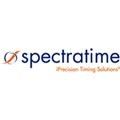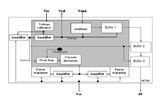
-
StatusCompleted
-
Status date2013-01-31
The project can be summarized as follows:
- First step concerning market needs and competition analysis concluded by an update of the requirements and a preliminary design proposal,
- Second step concerning preliminary breadboarding for solutions selection, concluded by a detailed design,
- Third step concerning EM manufacturing and testing , concluded by an overall assessment and recommendations.
The objective of this study is to design, manufacture and test an Engineering Model of a compact and low cost reference oscillator meeting the requirements specified in Updated Requirements Specifications for Reference Oscillator.
This equipment shall be free of any export licence control for use in European space programs.
The key issues addressed in the LNRO project were:
- Reach phase noise requirements from 1Hz to 1kHz by improvement of crystal loaded quality factor and amplifier flicker noise,
- Find solutions using ITAR free parts,
- Reduce power consumption, size and weight without short term, phase noise and frequency stability versus temperature degradation (oven size reduction),
- Cost reduction, in order to gain market share.
The expected benefits brought by the LNRO project are:
- An available European ITAR free solution,
- An improvement of phase noise behaviour, better than current competitors solutions,
- Consumption, size and weight reduction,
- A fully qualified EM design to be confirmed by an ARTES 3-4 project, qualification phase to be performed on QM,
- A design100% compliant with requirements, no competitor is 100% compliant.
In order to be compliant with ESA requirements we proposed the following architecture:
Electrical block diagram
In the gray area of the block diagram are all of the thermal sensitive functions which will be implanted on the heated board.
Thermo-mechanical structure
The oven will be done by:
- A cooper ring used to heat and fix the crystal resonator,
- A ground plane used to heat the PCB and the oscillator sensitive parts,
- Machining a few slots on the PCB for thermal insulation.
The final packaging target: 50x50x30mm
In order to reach the requirements we will test on a preliminary breadboard and select the best solutions:
- 6 Oscillator solutions
- 3 Colpitts basis
- 3 Butler basis
- 3 Buffer solutions
- 2 Voltage regulation configurations
- 2 Oven loop configurations
Here follows the study plan for the tasks that have lead to the development of a Low Phase Noise Reference Oscillator.
Phase 1 : Review and preliminary design
- Task 1: Requirements and Technology Review
- Task 2: Preliminary Design
Phase 2 : Breadboarding and design
- Task 3: Building Block Design and breadboarding
- Task 4: Detailed Design
Phase 3 : Manufacture, Assembly, Test and Conclusions
- Task 5: Manufacture and Assembly
- Task 6: Test
- Task 7: Overall Assessment and Recommendations
Project completed.






